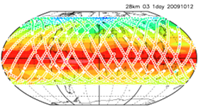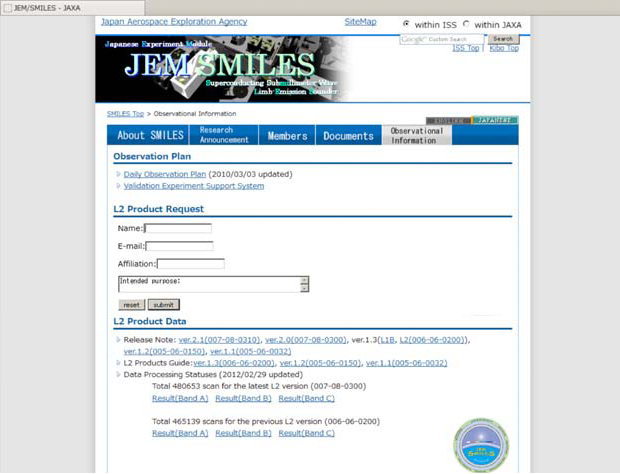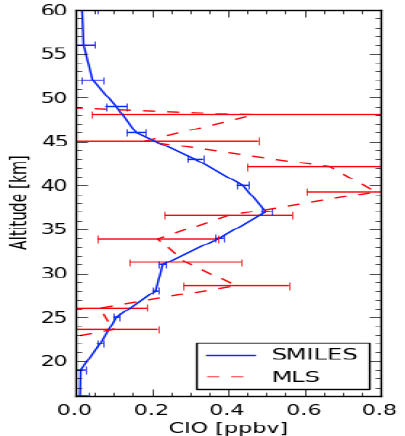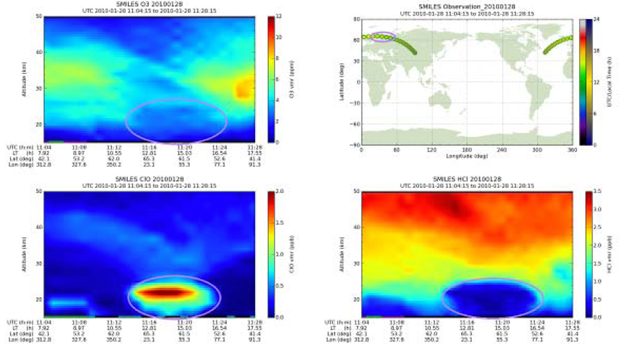The Superconducting Submillimeter-Wave Limb-Emission Sounder (SMILES) implemented Earth’s atmosphere observation mission with unprecedented high-precision, owing to the superconducting detector cooled down to 4K (-269 deg C). SMILES was developed under cooperation between National Institute of Information and Communications Technology (NICT) and Japan Aerospace Exploration Agency (JAXA), and it had been attached to the Japanese Experiment Module “KIBO” onboard the International Space Station.
JAXA and NICT have been carrying on improvement of retrieval of atmospheric minor constituents in order to demonstrate high performance of SMILES instrument and have been distributing level-2 observation data limited to the selected research groups among all applicants to the SMILES Research Announcement in August of 2009.
This time, we would like to release the SMILES observation data to the public, as we confirmed the high precision of these data. The data released to the public are the altitude distribution of 11 types of atmospheric minor constituents including ozone and chlorine compounds, retrieved from brightness temperature of 625-650 GHz electromagnetic emission measured by SMILES instrument. These data explain chemical phenomena of atmospheric minor constituents in stratosphere and lower mesosphere, therefore they contribute to the comprehensive analysis of Earth’s climate change including stratospheric ozone variation (such as “Ozone hole problem”) and global warming issues.










